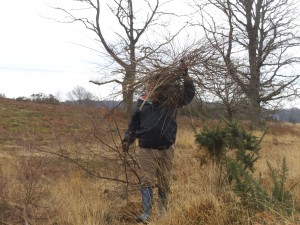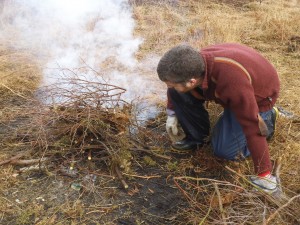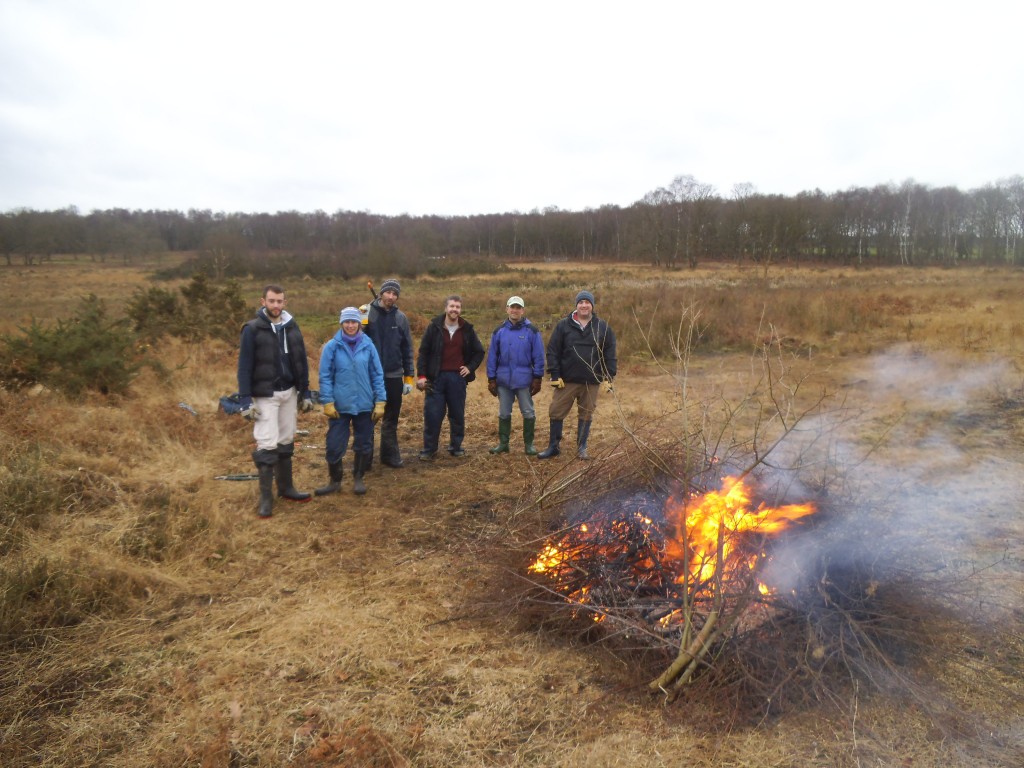If there is a quiet time of year for Wild Frontier Ecology then it is the winter time, so we thought we would take a day to go out as a team to gain an interesting new experience. But what to do? Well for ecologists many of whom have been stuck in the office the only option is surely to get outside and do some conservation work. I have been volunteering at Buxton Heath just north of Norwich on and off for nine years now, and have some good connections there, so that’s where we went.
Buxton Heath is the most fantastic place. It is a site of European importance managed by Norfolk Wildlife Trust -a complex of habitats including valley mire, wet heath and dry heath. The mire is a botanists dream, the buzz species has always been marsh gentian but for impact you just can’t beat the mass of orchids, and my personal favourites beautiful bog bean and round leaved sundew. In the summer adders are also to be found all over the site, and I have regularly seen butterfly enthusiasts cooing over the silver studded blues up in the dry heath. An evening trip can also be rewarding with nightjar and glow worms. Buxton Heath is also a great place to see turtle doves. Rob is about to embark on Dove Step, a 300 mile walk to raise money for this species, find out more on the Dove Step site.

John, with arms full.
This time of year there is less to spot but there is always something to see. We were rewarded by three snipe shooting out in front of us and the Sphagnum looks great this time of year for those who can be encouraged to look at the smaller things. This is also the time of year for practical conservation work at the site to take place, to maintain top habitat for all the specialist species.
We were met at the site by voluntary warden Phil Davison. He was only too willing to point us in direction of some young birch that needed removing, just north of the mire. So armed with loppers and bow saws we set to. Phil poisoned the cut stumps to try and prevent further re-growth, and then we could drag the cut saplings away.
Phil is in charge of the Buxton Heath Wildlife Group which has undertaken some of the management of the site for many years. Hand cutting of scrub is very important both within and on the edges of the mire habitats, where larger machinery just can’t get! Without a bit of hard work, willow and birch would soon colonise this site and many important habitats would be smothered.

- Rob can make fire out of anything.
Having created a huge pile of birch I then attempted to get the fire going. Let’s just say this isn’t my strong point, damp paper and the wind wasn’t helping. Many good matches were wasted as the wind put them straight out. Fortunately for us Rob is the fire master (who knew?). After a few false starts we soon had a roaring blaze to dispose of the birch and to keep us warm.
After a busy morning of cutting and burning (and a filling pub lunch) we finally had a walk round the site. Although the morning had been a fine one the rain soon came in. It soon became a fairly brisk walk back to the cars. We might be damp and smelling of smoke, but I certainly felt exceedingly happy after a rewarding day.

Happy Team





